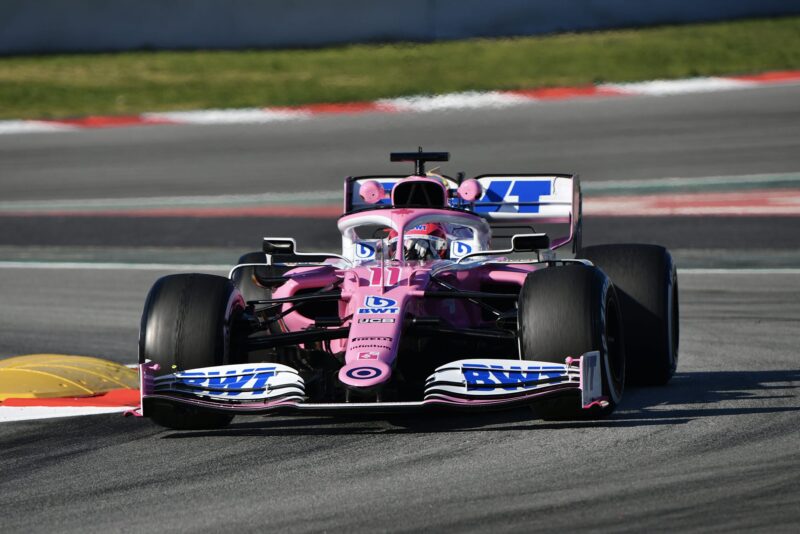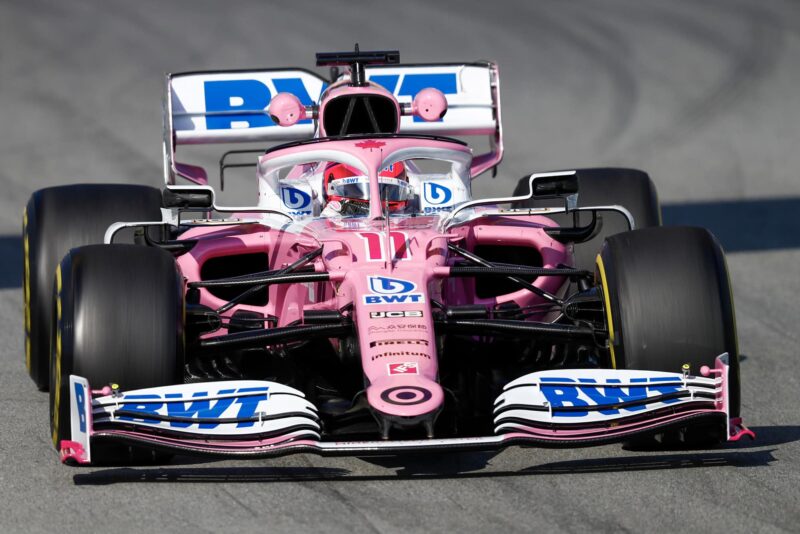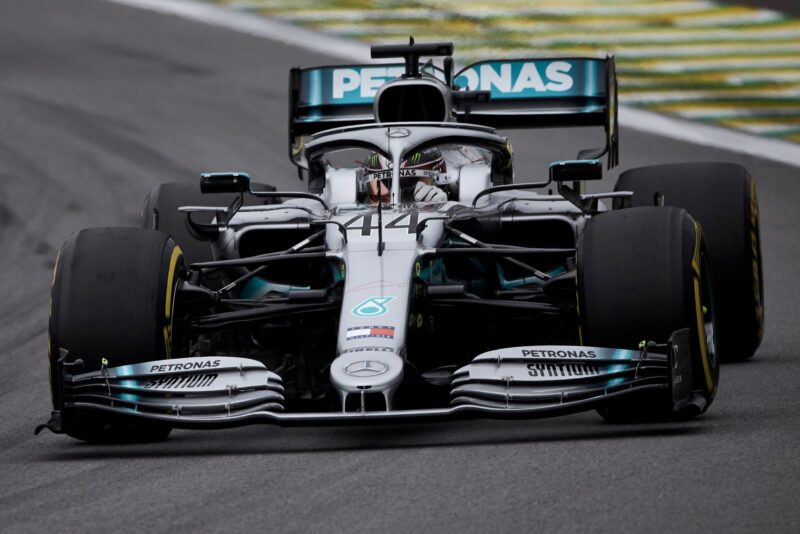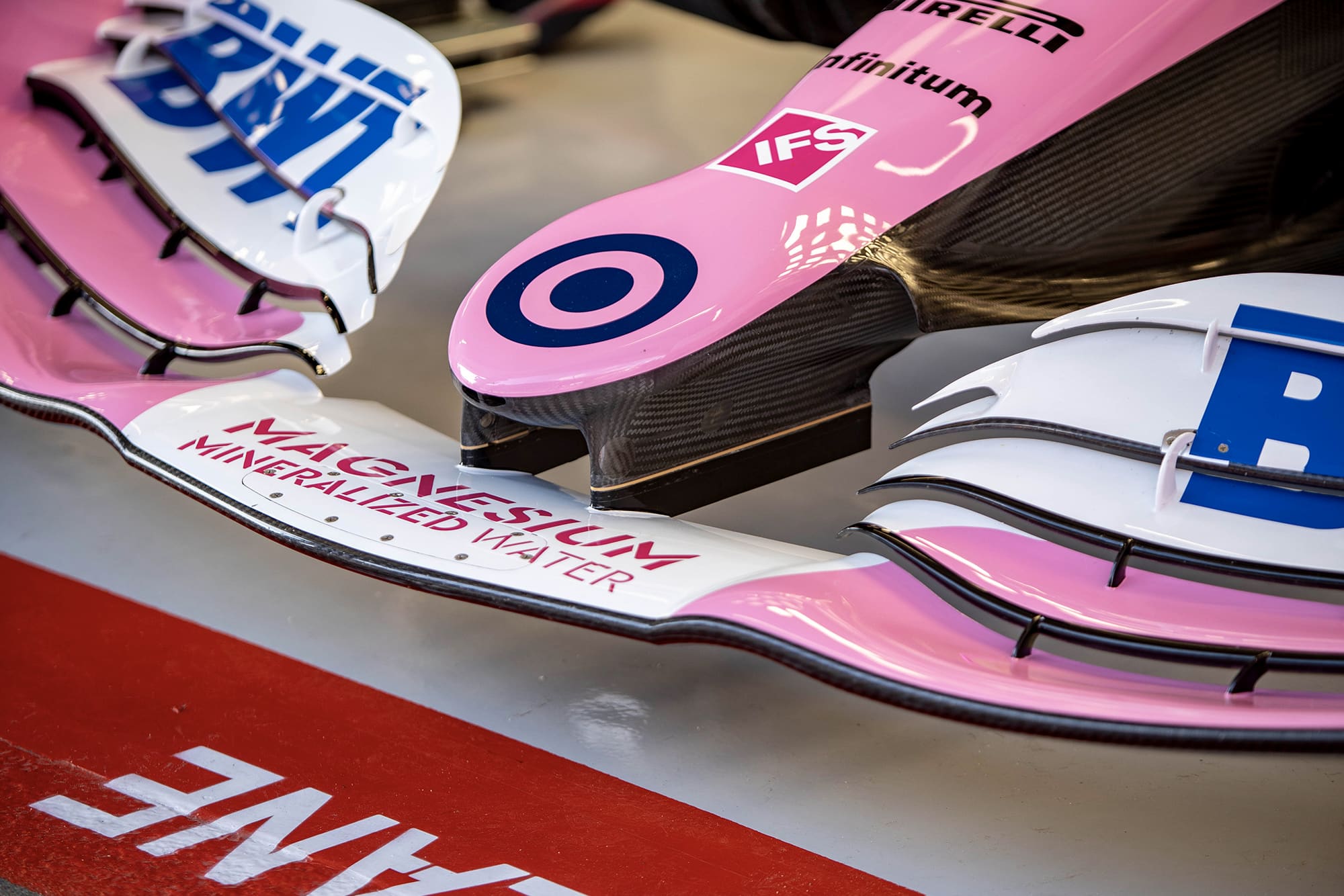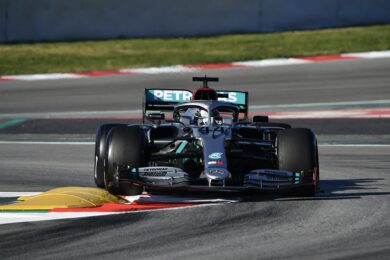Green highlights that making such a drastic switch was a high-risk strategy. “We’ve got one more year left in these regulations. I think there’s time to try something new, to take a risk. And I think we’ve taken a very, very big risk with what we’ve done with the car.”
There was good reason for the gamble, the team felt its existing car concept was running out of steam. “About the middle of last year, we saw where the RP 19 was developing and where it was going. It wasn’t really making the gains that we were hoping for. It was clear that if we carried on the route we were going, we were going to end up at best where we finished the championship last year. And to us that just wasn’t going to be acceptable.”
Additionally, trying to use Mercedes gearbox and suspension on a car with a fundamentally different philosophy was an uphill battle. For example, all of the rear suspension mounts to the gearbox and Racing Point had to work with what Mercedes supplied. Trying to create a suspension geometry that worked with high rake on foundations that were not suitable would always be a compromise.
As Green says. “They [Mercedes] are a different philosophy, a lower rake philosophy, the only one on the grid and it’s, it’s difficult to try and shoehorn and develop around a different philosophy from the underlying architecture that you have. So, it was a question that we posed ourselves, what should we do? Should we should we move across and try and develop a car to a different philosophy?”
An approximation, not a copy
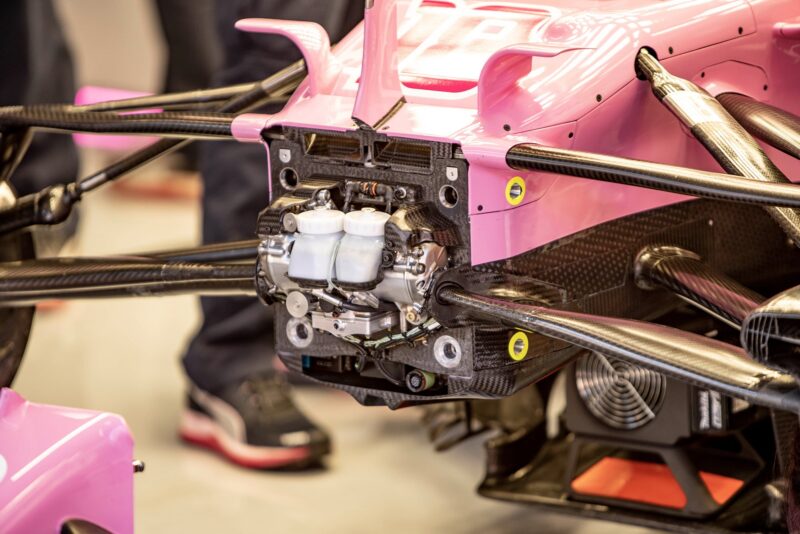
Racing Point dampers and suspension rockers are designed in-house
In effect, the RP20 is a copy of the Mercedes W10 bodywork along with elements of its outer suspension, attached to a Racing Point developed core. All of the inboard suspension parts, such as the dampers and suspension rockers, are still designed by the team. There is an option to buy in these parts, as Haas and Toro Rosso do, but Green was adamant the team wanted to retain control in these areas.
Similarly, the cooling system and packaging of the Mercedes power unit in the two chassis is very different. For example, Mercedes has always used a water-air charge cooler to chill its inlet air after the turbo. This is an efficient method, and allows Mercedes to have a more tightly packaged sidepod. It is also fiendishly complex and expensive.
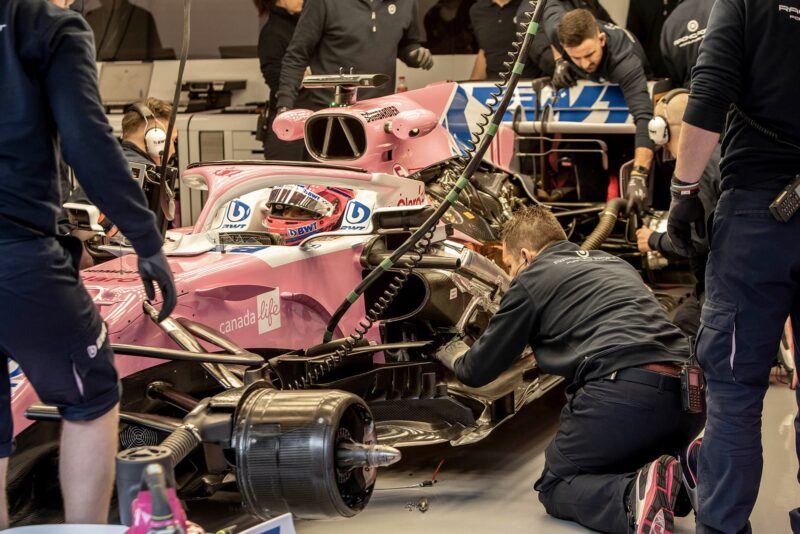
Brake drums and ducts are now bought in from Mercedes
When previously discussing this area of development, Green has always maintained that Racing Point’s approach of using a bulkier, but more cost-effective air-air cooler is the only viable option. This concept has carried over to the new car (regardless of the team’s newfound wealth), which in turn means that the sidepods, while similar to the W10, are very different under the skin.
Green has high hopes for the car, with a post-testing update due for Melbourne, the ideal would be a fast car out of the gate, that does not need extensive development. This would allow the team to focus its efforts on 2021. Though expanding from its Force India days, Racing Point is still a relative minnow.
Where Ferrari, Red Bull, Mercedes et al can relatively easily accommodate parallel development streams for 2020 and 21, with only around 400 personnel, Racing Point still needs to do what it has always excelled at, use its resources as efficiently as possible and continue to punch above its weight.
